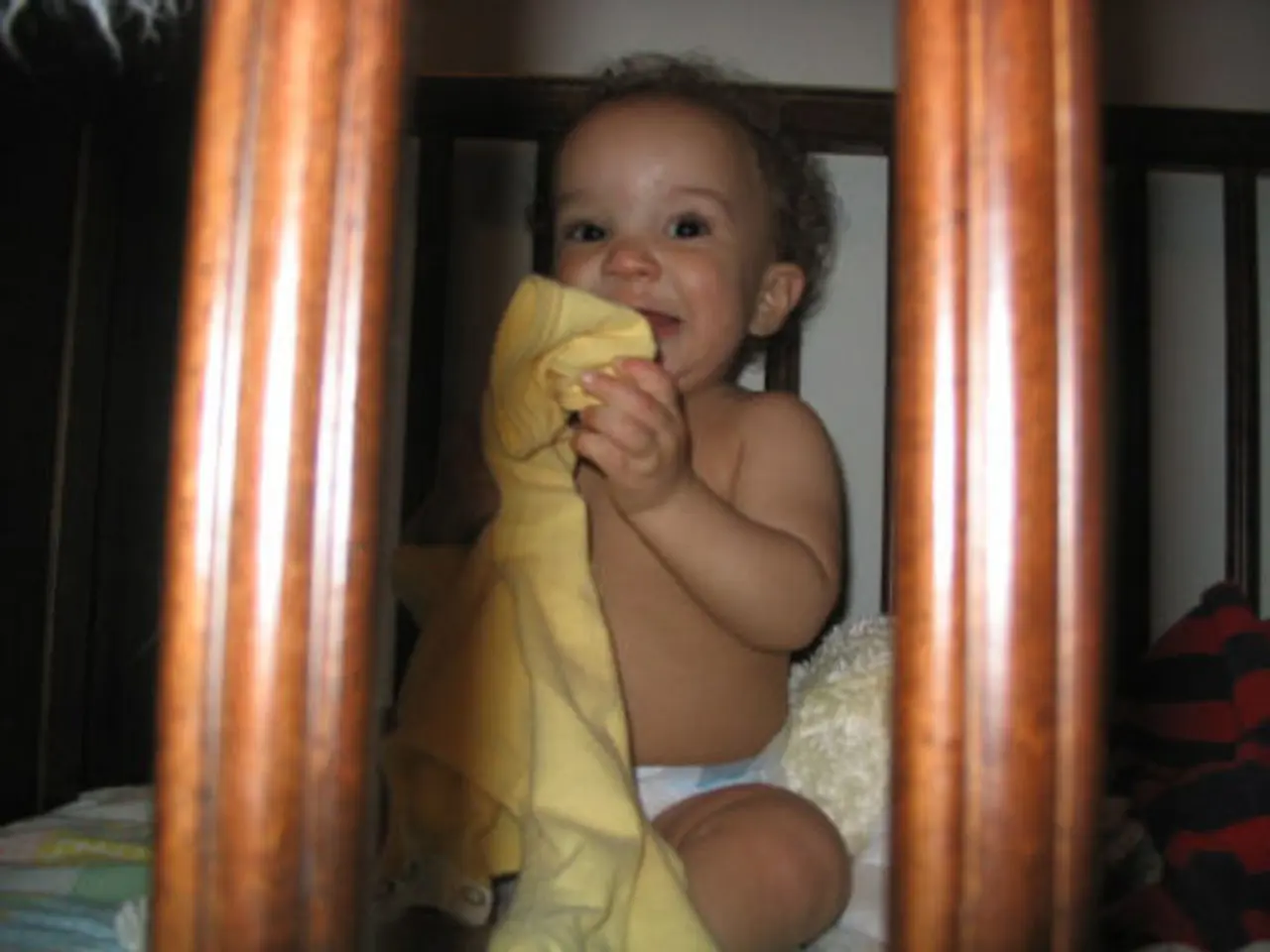Infant Fell Off Bed, Head Injury Possible: Signs to Watch Out For
A baby's first steps can be a joyous milestone, but it also marks a new phase of potential risks. One such risk is a fall, which can occur when a baby reaches the "rolling over" milestone on a high bed or other surfaces like changing tables and couches.
While a baby's skull is incredibly resilient, having an open fontanelle (soft spot) that allows for a lot of movement, it's crucial to be aware of signs of a serious injury after a fall. Even though it's rare to have significant injury from a baby falling off a bed, it's important to keep a close eye on your little one.
Here are some common signs of injury in a baby after a fall that causes a head impact:
- Changes in sleeping patterns (sleeping more or less than usual)
- Persistent crying or crying when the head is moved
- Vomiting or nausea
- Irritability or fussiness beyond usual behavior
- Difficulty feeding or changes in nursing habits
- Bump, bruise, or swelling on the head
- Difficulties with balance or coordination (if observable)
- Changes in mood or increased irritability
- Loss of consciousness or unresponsiveness (even briefly)
- Sensitivity to light or sound
- Eye pupil changes, such as dilation of one or both pupils
- Excessive sleepiness or difficulty waking up
- Seizures or convulsions
- Confusion, dazed appearance, or behavioral changes
Because babies cannot verbalize symptoms like headaches or dizziness, caregivers need to watch for these physical and behavioral signs and seek immediate medical evaluation when such signs appear, especially persistent vomiting, seizures, extreme sleepiness, or changes in alertness.
Additional signs include poor judgment, difficulty concentrating, or loss of interest in normal activities, though these may be more noticeable as the child grows older and can be observed over time.
If any severe symptoms occur such as repeated vomiting, seizures, inability to wake, one pupil larger than the other, or extreme confusion, immediate emergency care is necessary.
It's also important to note that falls are one of the leading causes of nonfatal injuries in children, according to the U.S. Centers for Disease Control and Prevention (CDC). Signs of any broken bones are indicative of a major injury and should be evaluated by a healthcare provider. Discharge or blood coming out of the baby's nose, ears, or eyes is a concerning symptom and requires medical evaluation.
After a baby falls, close observation is critical. Abnormal eye movements, increased sleepiness, or fussiness could be signs of an injury and should be monitored closely for the next 24 hours. Any behavior out of the ordinary for the baby should be checked out by a healthcare provider to ensure the baby's safety.
Dr. O'Connor advises checking for obvious signs of trauma after a baby falls, with certain signs warranting an immediate call to 911 for emergency help. Uncontrolled bleeding is a sign of a potentially severe injury and should be addressed by a healthcare provider. Swelling of the soft spot (fontanelle) in the baby's head could indicate a serious injury and should be evaluated by a healthcare provider.
In conclusion, while falls from high surfaces are more common than expected, they can often result in serious injuries that babies cannot communicate. By being aware of the signs and seeking prompt medical attention, caregivers can help ensure their baby's safety and wellbeing.
- In the realm of health-and-wellness, it's crucial for parents to be aware that falls, especially from high beds or other surfaces, can pose risks to their baby's mental-health and family-health.
- The Centers for Disease Control and Prevention (CDC) highlights falls as one of the leading causes of nonfatal injuries in children, so close observation after a fall is essential to identify any signs of injury.
- Besides the immediate common signs like changes in sleeping patterns, vomiting, or difficulties with balance, parents should also look for delayed symptoms such as poor judgment, difficulty concentrating, or loss of interest in normal activities, particularly as the child grows older.




